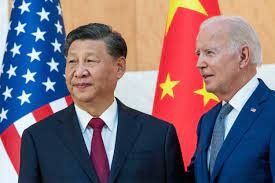For years, Americans keen on exploring China endured a stringent visa process, involving pre-booking accommodations and flights, along with submitting passports to an embassy or consulate for an indefinite duration. However, starting January 1, 2024, certain restrictions have been relaxed, making it more accessible for US citizens to obtain a Chinese tourist visa.
Ranked seventh globally in passport power, Americans can visit 187 countries and territories either without a visa or by obtaining one upon arrival. Notably absent from this list was mainland China, making it less appealing for American travelers. The arduous visa process had led many to consider China as “too hard” to visit.
As of January 1, Americans seeking a Chinese tourist visa (L-visa) no longer need to provide proof of a round-trip flight booking, hotel reservation, organized itinerary, or a letter of invitation. The Chinese embassy in Washington announced these relaxed guidelines on December 29, 2023, with the aim to “further facilitate people-to-people exchanges.”
State-run media outlet Xinhua reported plans by the Civil Aviation Administration of China to increase nonstop flights between the United States and China, enhancing connectivity.
The move has received positive reactions from potential travelers like Sam Fleischmann, a Pittsburgh-based education consultant. He appreciates the flexibility provided by the lifted restrictions, allowing for spontaneous travel. Fleischmann, planning a trip to China in April, is now more inclined to visit, considering the newfound ease in obtaining a visa.
China’s efforts to attract more visitors extend beyond Americans. In November, China initiated a trial program allowing visa-free entry for 15 days for visitors from France, Germany, Italy, the Netherlands, Spain, and Malaysia. Additionally, discussions between China and Thailand about a reciprocal visa-free program indicate a broader effort to facilitate travel.
Addressing challenges faced by Western tourists, China opened its main digital payment systems, WeChat Pay and Alipay, to users with non-Chinese credit cards and bank accounts. This move simplifies transactions for foreign visitors. Furthermore, since July of the previous year, visitors can link their Visa and Mastercard accounts to China’s popular mobile payment platforms, enabling cashless transactions across the country.
Despite these positive changes, the U.S. State Department’s guidance on travel to China remains cautious, categorizing it as a level three or “orange” country, advising travelers to “reconsider travel.” The guidance cites concerns about the arbitrary enforcement of local laws, exit bans, and the risk of wrongful detentions.
The alterations in China’s visa policies align with its efforts to recover from the economic impact of strict COVID-19 lockdowns. The country’s stringent measures during the pandemic led to a severe economic downturn, prompting the need for revitalization. Hong Kong University tourism professor Benjamin Iaquinto suggests that the changes signal China’s intent to reopen and boost its economy, addressing concerns about its international reputation.
However, Iaquinto cautions that geopolitical tensions, particularly the volatile relationship between the United States and China, might impact the permanence of these changes. Any political disputes or conflicts between the two nations could potentially lead to China reversing the recent visa policy adjustments.
In conclusion, the newfound ease in obtaining Chinese tourist visas presents an opportunity for increased tourism between the United States and China. The relaxation of restrictions, combined with efforts to enhance connectivity and simplify financial transactions for tourists, reflects China’s broader strategy to attract visitors and revive its economy post-pandemic.
